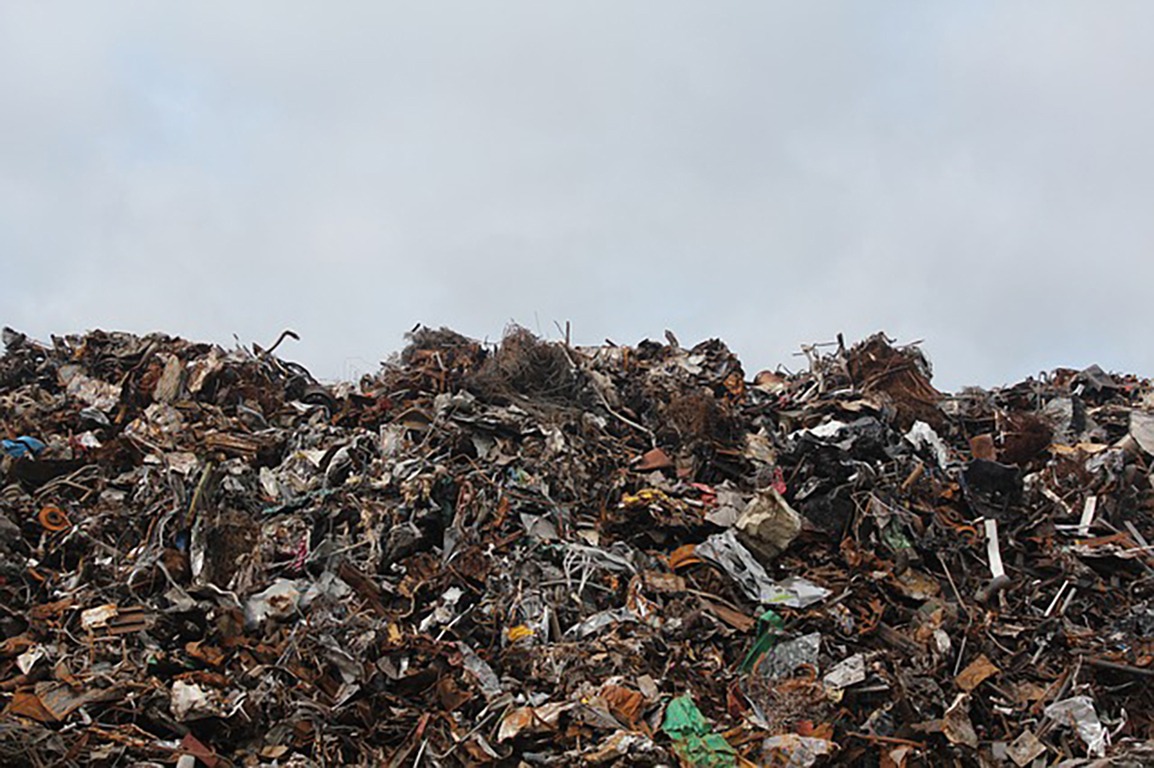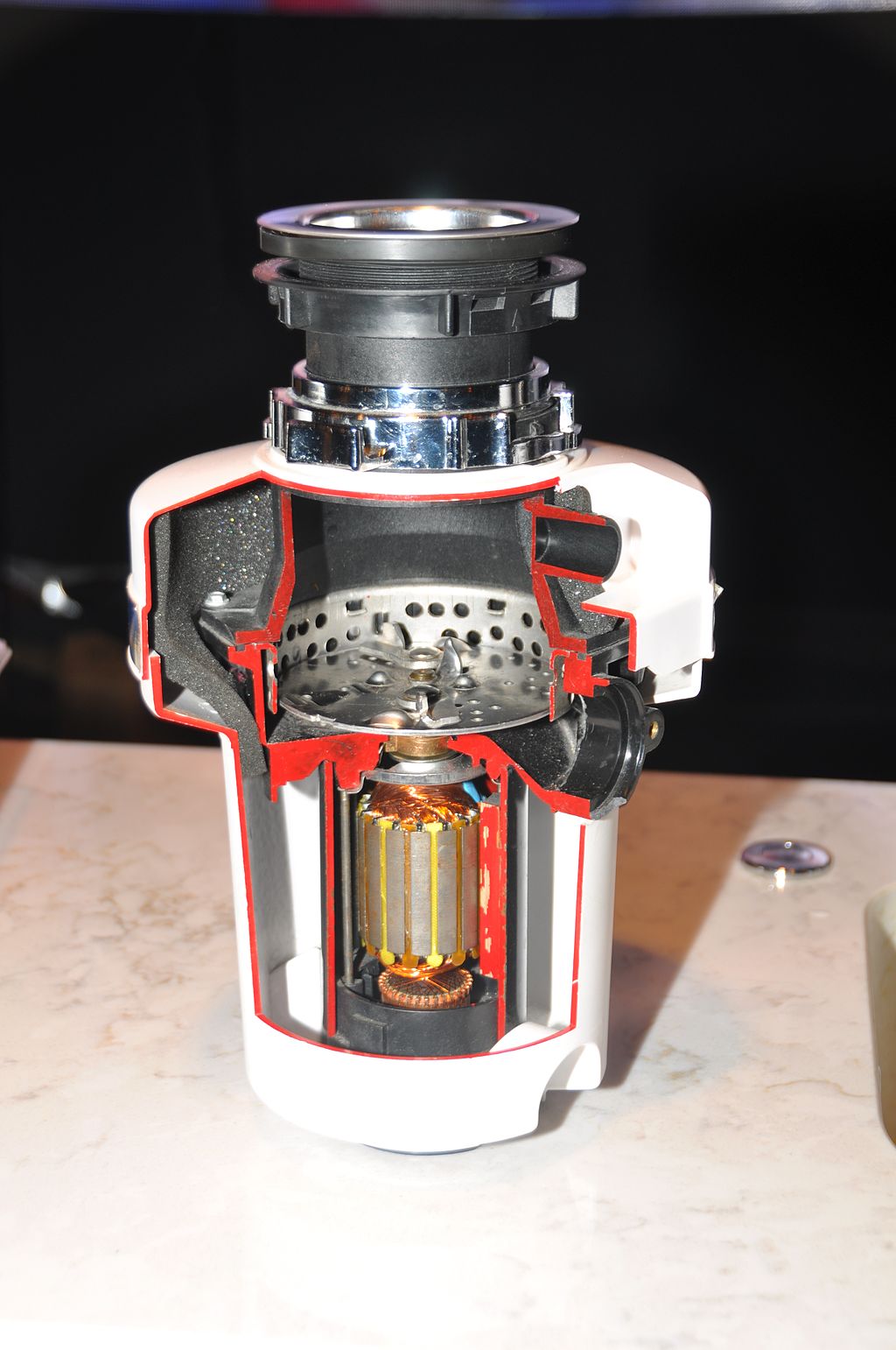Garbage disposals might be unnecessary to some homeowners, but if you’re one of the homeowners who use disposals on a regular basis, you’ll want to know the costs that go into repairs. The garbage disposal is an electrical appliance that acts as the mediator between the sink and it’s trap. By shredding the waste into shrunken pieces, it goes through the drains and pipes of your home and leads to a wastewater treatment.
After the churning process, your garbage disposal sends all that debris and disposes of all your unwanted leftovers to cut out the potential of overfilling the nation’s landfills. There is actually a lot more information regarding the history of disposal systems that the majority of the population are quite unaware of.
Table of Contents
The Concept of the Garbage Disposal
There are quite a few appliances that were invented by unorthodox processes. This is another example of the unconventional discoveries of different devices throughout the country’s history. Most people would probably be thinking that an engineer was responsible in the creation of the disposal unit but it was actually an architect from Wisconsin by the name of John W. Hammes.
Hammes invented the first disposal in 1927. It’s comedic and ironic to mention that the disposal was actually conceived in a basement workshop of Hammes. It’s almost comedic that many of the inventions created for the modern advancement of technology, always seem to be discovered in an obscure locale, like a garage or a basement.
John W. Hammes then went on to seek the patent for the garbage disposal unit in 1935, making the disposal available to the market and to the public in 1940. If you’re wondering what his inspiration was for the direction of inventing the disposal, it was his wife. He’d observed his wife wrapping their leftovers in newspapers before throwing them into the trash bin. The story goes on to lead Hammes to walk in front of his sink. He envisioned a grinding device that could shred the scraps of food into pieces, where all of that waste could be carried out from within a drain instead of a bin.
After Hammes finished the concept, he proposed an arrangement between himself and his local machine shop. By paying the shop a quarter an hour, he’d be able to make even more models and prototypes to perfect the disposal unit he imagined in front of his sink. It took John about 11 years, producing prototype after prototype, before he finally produced the right product.
The growth of the disposal industry boomed by the time of the 60s. Whatever the reason for the increase in growth and popularity, the disposal system became a part of the norm for a household, as a result. So much so that even today, there are units installed in almost half of the homes in the country.
Cost of Repairing the Garbage Disposal Parts
Many of the common issues that come with garbage disposals stem from the plumbing and electrical work that affect the unit itself. There are many different parts that make up the disposal. And each part has its own purpose, each one can affect the disposal greatly.
| Average Range | $65-$250 |
| Minimum Range | $50-$70 |
| Maximum Range | $270-$400 |
Stopper
The stopper part of a garbage disposal unit is placed at the top and installed from inside the drain of the sink. It’s succinct purpose is to stop water and food molecules from swirling down the drain. You won’t need to hire a repair specialist for a stopper because it simply needs a pair of hands to pull it out. The part itself is as inexpensive as a dollar but for higher end parts, the stopper can average all the way to the cost of $150.
Splash Guard
Stoppers and splash guards have universally fitting products that can be repaired or replaced in any disposal unit. The splash guards keep the water from splashing back at you once you turn on your faucet. It is a gasket that practically costs about $10 in your local hardware store and it takes about 15 minutes or less to completely replace. The labor cost to fix this part will average your costs from $35 to $60.
If you wish to replace the splash guard yourself, the process will require a bucket, the new splash guard you just recently bought to replace your old one, and the screwdriver necessary for the screws connecting your drain pipe and dishwasher line. You start by disconnecting your power from the disposal, whether you need to unplug a cord or shut off the source through your breaker.
Once you do so, you unscrew the disposal unit and remove any connection to the wastewater line. Then, place your bucket correctly underneath the unit and await the nasty wastewater that will splash down once you remove the connections and the unit. Loosen the locking ring attached to the mount and the disposal will drop.
Replace your old splash guard with the new one and redo this process backwards to reconnect the whole unit back into your sink.
Seal
On average, the seal of your garbage disposal ranges between $65 to $125. The troubling subject of the seal in your disposal is how the part leaks water. It may seemingly be a minor annoyance but if you run across such an inconvenience, you’ll need a new one to to replace your old one. This is especially vital because the seal acts as, well, the seal. A frustrating occurrence you’ll be going up against is the dripping sounds of the unforeseen damage to the part.
It is simple to fix a disposal seal, however, and the part is actually very cheap and simple to repair on your own. But if you want to hire a professional, the range above is what you’ll be looking at when you’re charged for the work.
Knockout Plug
The replacement of a knockout plug, on average, ranges from $65 to $125 and acts as a connector between your drainpipe and the water that needs to be drained. Although the seal works to prevent leaks, so does your knockout plug. In most cases, the knockout plug is the part that works as an alternative to disposals that are not connected to a dishwasher.
The plug is a little more complex to repair and replace. You need to have some knowledge and skill in plumbing and experienced hands to try to switch them out. It is highly recommended that homeowners call and hire a repair specialist in these situations.
Impellers
Although the part maintains some risk in handling, the “blades” of your disposal unit are significant to the assembly of your appliance. It averages from $65 to $125. Picture a blender, the impellers act as the propelling blades that blend your food down, so as to assist in pouring and carrying your waste down easier.
On many occasions, the impellers can stop working if a jam or a clog is blocking your kitchen drain. If you’re worried that your impellers are broken or damaged, all you have to do is simply take a flashlight or the flashlight in your phone to shine down your drain. Turn on your disposal to see if your blades are moving or if there is a blockage preventing your impellers from turning.
If there is no obstruction in the way, simply use a spoon handle to push the two blades out of the way. However, there could be another underlying issue involved in this situation. You may be dealing with a foreign and unknown object that shouldn’t be inside your drain, like a coin or a screw. Test this out by placing a bone or a hard material, like a fruit pit, and see if it blends. In some cases this will reveal whatever foreign object is in the way.
Use some pliers lying around your house and pick out the object. If the durability of your impellers is compromised then you can simply pick up your phone and call a technician to see what the problem might be and the professional will be able to fix the appliance for you.
Button
Do not be alarmed if your button is unresponsive. Check one more time before you decide to replace or “repair” the part. First, see if the button is in the off position. Then, if there is a red button, just softly hold onto the button and see if your disposal resets. It might take about ten minutes for the reset to occur. Lastly, turn on your faucet and your disposal.
If the disposal is still not working or your reset button isn’t staying in place, you’ll probably need to call the repair person. In such situations, the button’s repair costs will average about $65 to $140. It’s the simplest function in a machine but it’s basically the most integral part of your appliance. And in any case, the most common reason as to why your button isn’t working is because it probably requires additional wires to be installed.
Flange
Considering the replacement of a disposal flange, prepare to face the average cost of $75 ranging to $125. It is a ring-shaped part that acts as the joint between your disposal model and your sink. It allows your water to pass through the drain and holds the main body in position.
Flywheel
This is the part of your garbage disposal that helps your impellers spin. It rotates to keep the impellers continuing the shredding process. If your flywheel ever gets stuck, your other relational parts will be affected, punitively, the motor. Once your flywheel is stuck and left on for too long, the motor will eventually burn out. On average, the ranged cost of a replacement will be about $100 to $200.
Motor
Your disposal’s motor is practically the most expensive part to replace. On average, it’ll probably cost you between the range of $175 and $400. But most importantly, you need to know about what kind of horsepower that your old model utilized before. Previously stated in an article about installing garbage disposals, the horsepower of a motor all depends on the number of relatives or family members who live in your household.
| Horsepower | Amount of People | Cost Range | Amount of Usage |
| ⅓ | 1-2 | $75-$150 | Light Usage |
| ½ | 1-4 | $75-$200 | Medium Usage |
| ¾ | 3-6 | $100-$250 | Medium Usage |
| 1 | 5-8 | $200-$500 | Heavy Usage |
| 2 | 8+ | $300-$1100 | Heavy Usage |
As you can see from the chart above, the horsepower is what determines the amount of power and usage you’ll need for the amount of people that live in your home. Typically, the motor only uses the strongest horsepower if you have a large family or you own a restaurant.
Induction Motor
Although the induction motor is a high-speed electrical motor, it takes a longer time to reach its maximum RPM compared to a permanent magnet motor. Rhetorically speaking, the permanent magnet motor may seem like a better alternative, however, many induction motors have models that get the job done.
Permanent Magnet Motor
This kind of motor uses permanent magnets to spin at its maximum momentum from the second you turn it on. The larger your motor is, the costlier the price will be. Considering how often you decide to use your garbage disposal is how quickly you can determine it will last. The life expectancy of garbage disposal units and the costs associated with them should be balanced with your own accommodations.
Cost to Garbage Disposal Issues
What kind of issues does your unit face? What needs to be corrected? Other than the complications that your parts will eventually have to forgo, there are common issues of your garbage disposal that can determine labor costs.
Typical problems have commonly been addressed by many homeowners and the costs of repairs have also been listed along with those common hurdles.
| Not Grinding | $50-$150 |
| Loose Mount Screws | $50-$150 |
| Not Turning On | $50-$400 |
| Clogs | $60-$150 |
| Slow | $60-$150 |
| Hums | $60-$400 |
| Loose Impellers | $65-$125 |
| Jammed | $75-$150 |
| Leaks | $75-$175 |
All of the complexities facing the issues in a garbage disposal can be rooted by the difficulties in understanding the parts. From further insight at the issues of your garbage disposal, you’ll see which part might need a repair. If your disposal isn’t turning on or if it hums, any of your parts could be the motive, which is why the range of repair costs is so different.
Garbage Disposal Myths
The first myth that comes to mind is how much energy and water that garbage disposals will waste away. Statistically, the disposal actually costs below 60 cents per year, in terms of electricity. If you want to talk about how much water is wasted, it’s only about a gallon per person a day.
The second myth that comes to a homeowner’s mind is how garbage disposals harm sewage. This myth was so prevalent that the city of New York actually had garbage disposals banned for a few years, until the ban was rescinded in 1997. Studies have shown that the majority of materials that are disposed of by these appliances are actually fruit or organic material. The main cause for concern was how much build up of oil, fats, and grease would clog up the sewers of cities worldwide.
The third myth is how negatively impacting garbage disposals are for composting. Most homeowners who do practice composting don’t have the knowledge that un-compostable products, like meat, bones, dairy and eggs aren’t capable of being ground. The whole purpose of composting is to improve the quality of soils and the environment, by extension, through the decomposing of those organic materials. Some units actually separate liquids and solids and deposit the ground up materials into a compost bin.
The fourth biggest myth that is a facade to the public is how garbage disposals are worse than landfills because the waste affects the ecosystem negatively. Most major cities have wastewater treatment plants to alleviate such a doubtful casting.

Wastewater Treatment
Now let’s discuss the process of how environmentally friendly the garbage disposal system can be. What happens when you put your food or waste down the drain and turn on your disposal? As the blades grind up all that trash, all of it goes through your pipes and gets sent to the nearest wastewater treatment plant. Once that occurs, the first part of the process becomes screening.
Screening is checking if there’s unwanted materials like wood, rocks, or, believe it or not, dead animals. Unless the unwanted materials are removed from the pipes leading to the plant, it will cause numerous problems to not only the equipment but also to the environment.
Pumping involves a gravitational factor of forcing your excess waste to the treatment plant itself. The plants are often located and built low ground, which means there’s a force of gravity that pushes and sends your and other homeowner’s waste down altogether. Then it is sent to aerate, where the sewage is shaken and exposed to air. The dissolution of chemicals and gases can be worse if released into the nearest river, which the process will end up doing. So, aeration will rejuvenate the oxygen used up for decaying objects.
After it is aerated in a separate tank, it is sent to a sedimentation tank, this is where the organic parts of the materials sent are settled. There are also larger tanks called digesters that “digests” the larger materials that are being sent. Then the process removes the “scum”, which is most often the grease, oils, plastics, and soap that people drain out through their sinks or toilets. There are some cities that filter all that scum out through another process. But by using some kind of filtering substance, sometimes sand, bacteria is erased from the equation.
You’d also see another method other than sand, like chlorine, to kill off bacteria, and although that may seem like a health risk, it’s necessary to keep the water clean when the waste is sent to a nearby river. The treatment plant also adds other chemicals to counteract the hazards of chlorine entering into the water and by doing so, your city will be able to protect marine life.
Although a garbage disposal might seem like a worse option for the environment, the wastewater treatment plants do their part in safely securing your unmentionable waste and recycle the water back into rivers. Landfills aren’t just ugly, they’re downright disgusting. They’re a major asset for the unwanted parts of our lives but they end up becoming the major source of pollution. The toxins, leachate, and greenhouse gases that pierce through the air cause worse and worse effects into the atmosphere.

Hiring a Professional or Professionals Through House Tipster
Now that you have all the information about the prices and the costs of repairing the intricate parts in your garbage disposal, you should check out which professional that can help you in repairing the model you own. Although you can probably fix it all yourself, it can be quite a dangerous task to fulfill. Within the extensive mountain of notes and research you’ve acquired, you’ll be wondering how you can find the perfect professional to get the job done.
As stated in previous articles, all that time you’d be wasting on the application for a permit to change your pipes and drains, and all the labor that stacks along with a DIY, you should reevaluate the options of local plumbers around your area! Check out House Tipster, and find the perfect professional for your home repair needs. How much does garbage disposal repair cost? Find out from professionals near you!
Featured Image from Joe Shlabotnik from Flickr

























